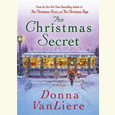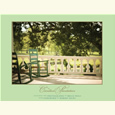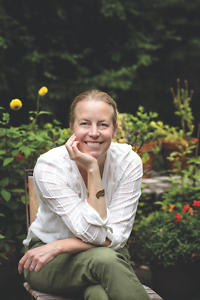Power to the (Youngest) People
Chelsea Clinton talks with Chapter 16 about It’s Your World, her inspiring new book for middle-grade readers
Chelsea Clinton’s first memory of reading was of scouring the newspaper so she could keep up with her parents’ conversations at the family dinner table. It’s Your World: Get Informed, Get Inspired & Get Going shares stories of how Clinton became a socially conscious kid and activist. Luckily for those of us trying to parent without presidential credentials, this book is not a how-to for parents hoping to design a responsible child—instead it’s a resource for kids at an age when they are beginning to care passionately about the people, animals, and places in this world.
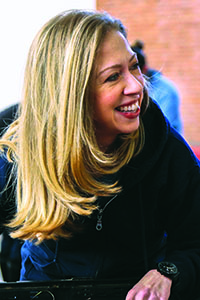 As both the parent of two kids under the age of nine and as the pastor of a church, I spend a lot of time considering not just how people will feed and educate their kids but how they will find the time and energy to sustain the earth and make it a better place for the next generation. Experts tell us that children learn moral and ethical behavior not by what parents say but by the actions they demonstrate—volunteering at the local shelter or food pantry, for example, or telling the truth at every opportunity. But now that service learning is an integral part of my kids’ public-school education, I recognize the way watching a parent volunteering only helps kids see the importance of doing something; it doesn’t give them a full picture of why something needs to be done or how it can be done most effectively. I doubt I am alone in feeling I could use some help in talking about the complexities and interconnected nature of the problems facing today’s world.
As both the parent of two kids under the age of nine and as the pastor of a church, I spend a lot of time considering not just how people will feed and educate their kids but how they will find the time and energy to sustain the earth and make it a better place for the next generation. Experts tell us that children learn moral and ethical behavior not by what parents say but by the actions they demonstrate—volunteering at the local shelter or food pantry, for example, or telling the truth at every opportunity. But now that service learning is an integral part of my kids’ public-school education, I recognize the way watching a parent volunteering only helps kids see the importance of doing something; it doesn’t give them a full picture of why something needs to be done or how it can be done most effectively. I doubt I am alone in feeling I could use some help in talking about the complexities and interconnected nature of the problems facing today’s world.
It’s Your World: Get Informed, Get Inspired, and Get Going is a great resource for readers ten years old and up who want to find out about what the world needs and how they can help. The book is organized into four parts—economies, human rights, health, and the environment—which work together to cover the systemic reasons for our greatest problems, from poverty to cancer to climate change. Driven by her own experience of coming to social consciousness at a young age, Clinton was inspired to write in a way a fifth grader can comprehend. Throughout the text, she shares inspiring stories of young people who took action when faced with a problem that affected the lives around them. In “$1.25 a Day,” a chapter on global poverty, Clinton tells the story of a Malawi boy named William who found a library book on how to build a windmill, which he used along with scrap parts to bring electricity to his neighborhood.
My son is a little younger than It’s Your World‘s target audience, so we read the book together. I welcomed the feeling of hope that comes of looking at things, even those imbued with injustice and violence, through a child’s eyes. My son wanted help focusing on the book’s facts and data; otherwise he was quick to skip to the stories of young people making a difference. In writing, as in parenting, showing may be a more powerful tool than telling, but we appreciated the book’s invitation for kids and adults to discuss the issues and get going.
In advance of her Nashville appearance, Chelsea Clinton answered questions from Chapter 16 about why it’s important to treat kids seriously, to recognize how engaged they are in their world, and to empower them to form their own opinions and take action.
Chapter 16: Your book tackles global issues like poverty, human rights, health epidemics, and climate change that can confuse even the most brilliant adults. Why did you chose to write for ten- to fourteen-year-olds? Is there a particular strategy, or rule of thumb, that you used to make these complex issues accessible to middle-grade readers?
Chelsea Clinton: When I was ten or eleven years old, I read a book called 50 Simple Things Kids Can Do to Save the Earth, and it had a big impact on me. It treated me seriously as someone who deserved to know about climate change and pollution, not just “a kid.” It also empowered me with practical suggestions of what I could do as a little girl in Little Rock, Arkansas, to help tackle them—things like recycle old homework or newspapers and cut up the plastic rings around soda cans so that marine wildlife wouldn’t choke on them and die. Listening to kids today, I consistently hear them trying to understand the issues impacting our world and trying to figure out what they can do about them. I believe that with a little bit of information, kids can make a difference. My hope for It’s Your World is that it will affect even one kid the way that 50 Simple Things affected me when I was that age.
I think it’s important to treat kids seriously. You’re never too young to have a valid opinion or ask a thoughtful question. Throughout the book, I tried to ensure that I treated kids seriously and that I’m also respectful to the issues in a way that has integrity while being accessible. One of the things I’ve always been struck by when talking to kids is how much more engaged they are in the world—and want to make a difference in our world—than I think some adults realize.
Chapter 16: Of all these issues, is there one that’s particularly close to your own heart?
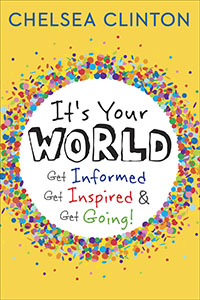
Clinton: I think they’re all important—and it’s impossible to pick one because of how interconnected they are. For example, access to clean, safe drinking water is something I talk about a few times in the book because it is so fundamental to improving health and fighting poverty and inequality, as well as for helping kids go to and stay in school (because they’re not sick from dirty water) and empowering women to be able to go to school and work (because they’re not spending hours a day getting water).
Chapter 16: As someone who has considered these topics deeply and worked toward solutions, did you find it difficult to present a balanced perspective so that kids have the chance to form their own opinions and take their own actions?
Clinton: I wrote It’s Your World with the hope that it would be a resource and guide to help kids form their own opinions. What to care about or how to think about an issue are questions that I think every kid needs to answer for her- or himself. Specific issues in the book will resonate with some kids more than with others, and that’s more than fine! In the book, I do make distinctions between what we know as facts from science and research and what are various opinions or options about how best to tackle a given challenge.
Chapter 16: My eight-year-old’s favorite parts of the book were your accounts of kids who have made a difference in their communities. How did you collect those stories?
Clinton: Thank you! One of the most fun parts about writing this book was being able to highlight some of the amazing young change-makers I already knew and highlighting others whose stories I came to know through the research process. The hardest part of writing the book was deciding which areas to focus on and then which inspiring stories and organizations I had room to include. Thankfully, on the It’s Your World website we’re able to highlight more stories of young people changing their communities and our world than are even in the book.
Chapter 16: My own favorite parts were the personal anecdotes from your childhood. Did writing this book give you any new perspectives on how you were raised, or how you plan to parent your own children?
Clinton: Thank you. My husband Marc and I have a wonderful thirteen-month-old daughter named Charlotte. We hope to give her the gifts my parents gave me: a curiosity about the world, the ability to take in information and have an opinion (backed up by facts!) about what she thinks is the best answer to fix a challenge or to help there be more of something she thinks is good and healthy. I didn’t know I could care any more about what I cared about already until I became a mom—and then once I did become a mom, I realized I could and wanted to work even more intensely to help make our planet safer, healthier, more equitable and more sustainable because it’s the world my daughter is going to grow up in.
Chapter 16: In the chapter on global rights for women, you write, “In some parts of the world, the worst thing that can happen to a family—as they see it—is to have a daughter instead of a son.” For me, such topics were painful to read aloud to my son because of the underlying potential for violence and the entrenched sexism that threaten women’s bodies and minds. Did you find yourself leaving out some of the context (e.g. cultural and religious beliefs) behind the status of women because it was too difficult, or too controversial?
Clinton: In every section of the book, there were issues or layers within issues which frankly could take up whole books on their own. My goal with the book was to present data and facts on some of the key issues that I felt impacted kids because of the world as it is today or the world they will grow up and grow old in—or all of the above. For example, on the issue of child marriage, many kids are likely unaware that one of every three females married in the world every year is a girl married before she turns eighteen, and one in nine is a girl before she turns fifteen. There are even states in the United States where a girl as young as twelve can be married without her consent if her parents and the courts agree she should.
The reasons behind a fundamental violation of human rights, such as child marriage—whether they are cultural, religious, social, economic, or some combination of all—are all important, and vary from country to country and community to community. Thankfully there are teachers and parents like you who are supportive of having conversations—sometimes difficult ones—about hard issues and the painful reasons sometimes behind them. I hope that It’s Your World helps inform and even start conversations between kids, between kids and their families, between kids and their teachers, and between kids and their friends. My hope is that it’s not just a book to read but also a tool for parents and children, and teachers and their students, to discuss and eventually take action on issues like these.
Chapter 16: When you consider your daughter’s future and what issues she will face when she is your age, what makes you most hopeful about the direction the world is going?
Clinton: The stories I share in the book about kids working against hunger, working for the right of every kid everywhere to be able to go to school, working to help girls have the same rights and opportunities of boys, working to plant more trees to combat deforestation, and working to raise awareness about elephant poaching being the main source of ivory in markets around the world—all of those stories are proof that you’re never too young to make a real impact, and all of those stories and so many more make me hopeful about our future. In the weeks since It’s Your World came out, I keep hearing more and more new stories from kids (and their proud parents and teachers) who are making real and meaningful change in their own communities. I’m more optimistic now than ever.
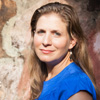
Beth Waltemath graduated with a degree in English from the University of Virginia and worked at both Random House and Hearst magazines before leaving publishing to attend Union Theological Seminary in New York City. A Nashville native, she now lives in Decatur, Georgia.

